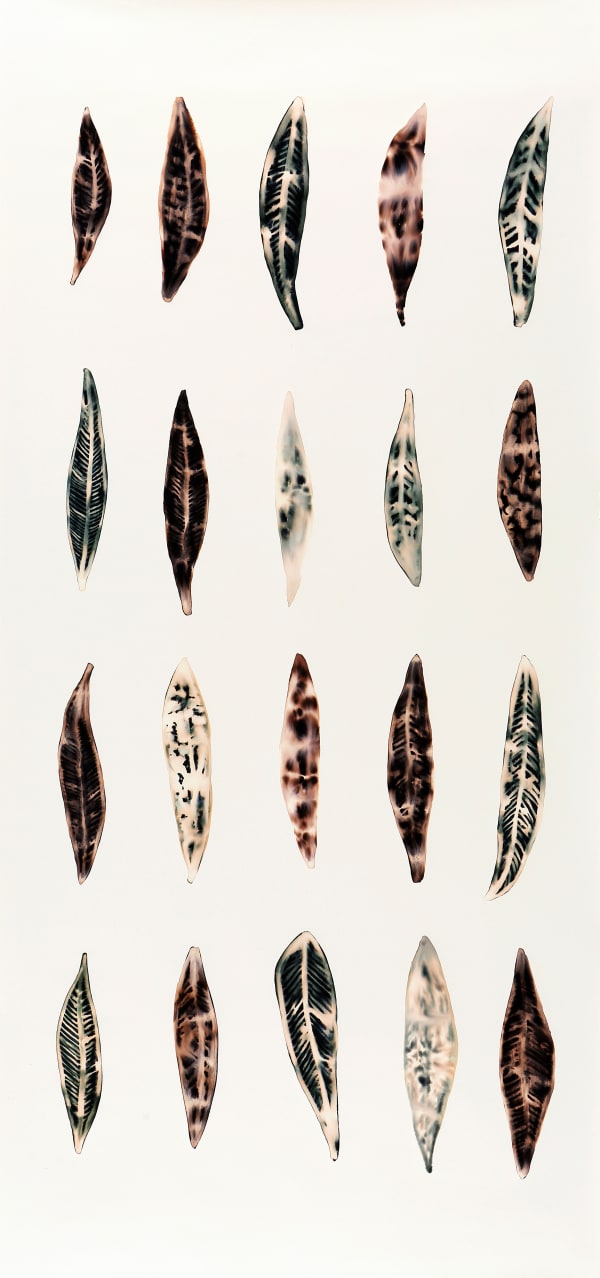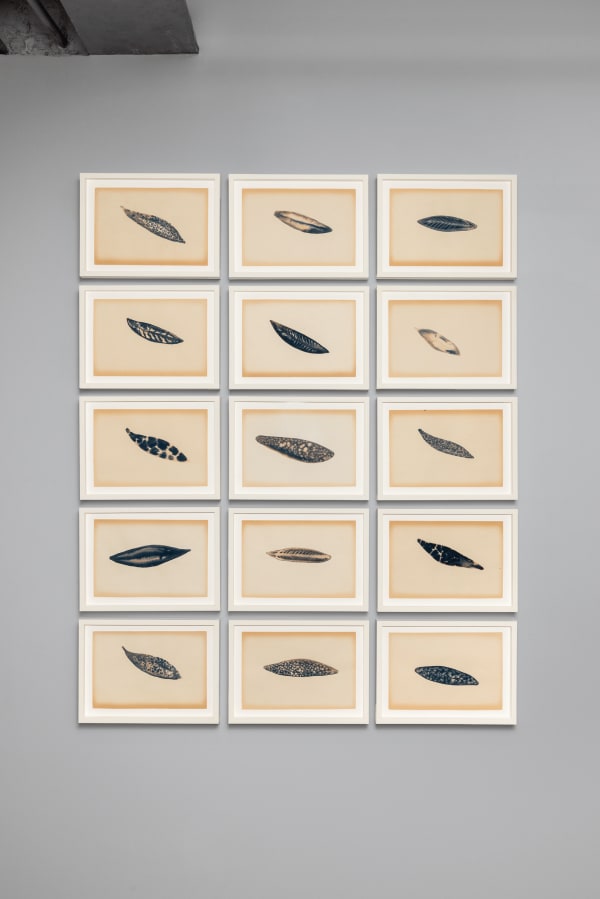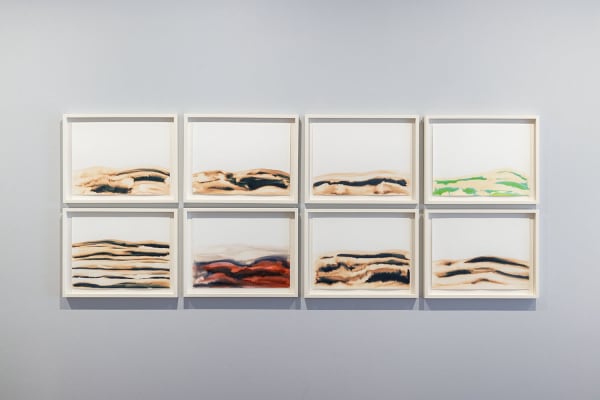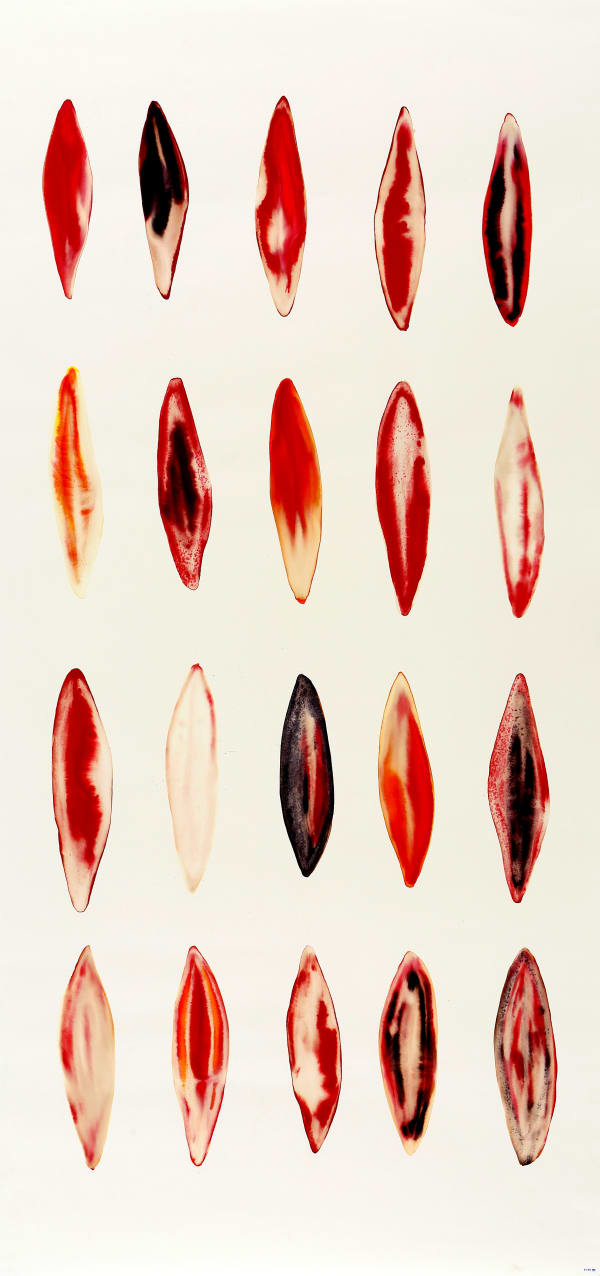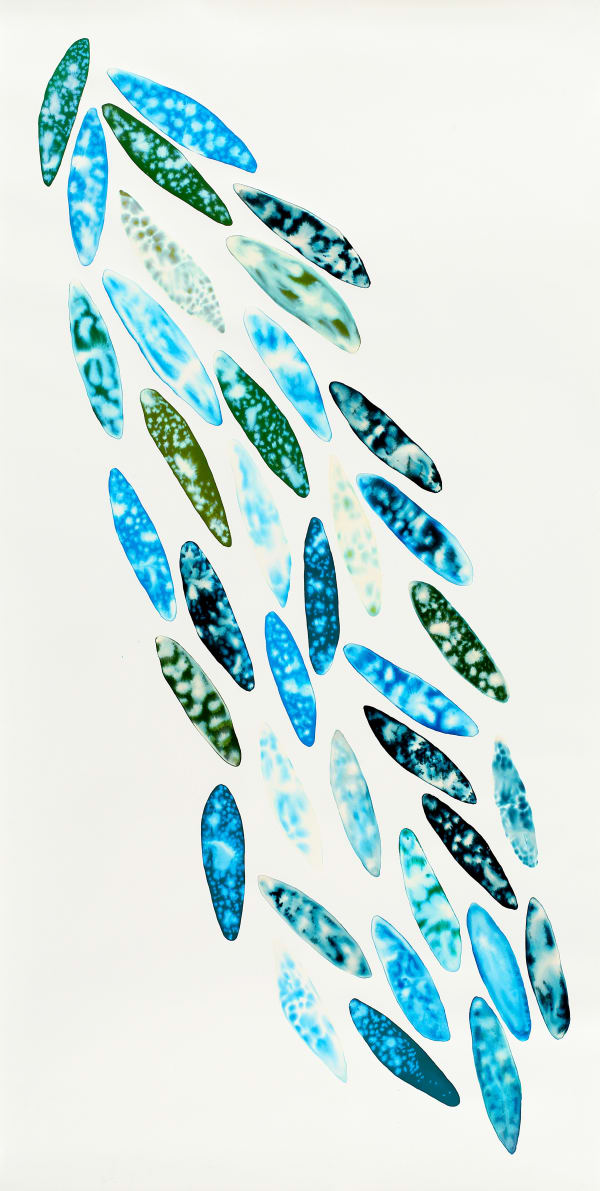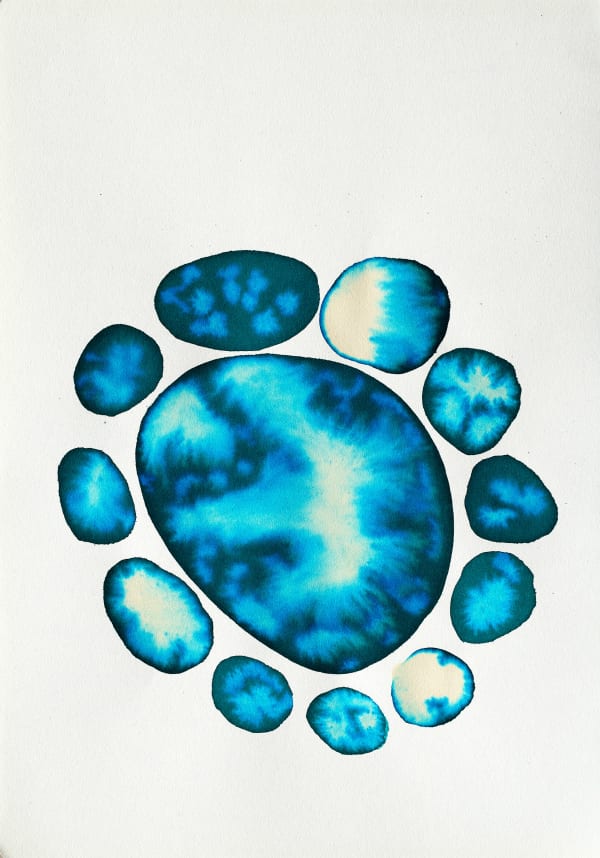Fakhri El Ghezal: D'eaux, de graines et de particules lumineuses
As Far As The Eye Can See
A few notes on the visions of Fakri El Ghezal
Fakhri El Ghezal is opening a new space in his studio. Already a multifaceted artist, he likes to organize his studio with a distinct signature, as if to better embody the essence of a practice. We already know Fakhri El Ghezal as a photographer and video artist capturing the bitterness of reality, and further, Ibrahim Matouss as a painter of brutal existence. Finally, he writes words and brief phrases as sharply as one would spit out an insult, and once again, playing with pseudonyms, he invoked Oueld Halima.
And so one might expect to see, in this new space, yet another pseudonym. But no. It is simply him, or more essentially him. Essentially, because he seems to inscribe himself in a space that stands as a median to the three other creative spaces. A space where some elements from all other spaces coexist.
To grasp these intricacies, a few words first about the practice he has been developing in this new studio since 2020. From this practice, he presents a few outcomes here.
First, it happens by chance. A colored piece of paper is touched by bleach, which discolors the material. Where one would see a loss, the artist's eye has seen a gain. The color has gained in luminosity. No doubt it was the photographer's eye that saw this chemistry as a revelation.
Then, a ritual is established within the artist's practice. Repeatedly, in a notebook or on a series of identical pieces of paper, he draws a colored shape onto which he applies bleach with the tip of a felt pen. The bleach penetrates the still-wet color, revealing figures of dissolution.
The artist inscribes monochrome ovoid shapes. Sometimes they resemble a plant leaf or an ellipsoid, sometimes they are round. On small surfaces, the shape stands alone. Over larger areas, the shapes are repeated in a systematic order on some pieces, while on others, they are arranged in a more fluctuating and free manner.
In Tunisian dialect, to "open the color" is to dilute it. It then goes through all the nuances to reach its disappearance. This chemical violence that the artist explores may interest him because it "opens up the color" in some places, without losing its substance in others. In one body of color, its diverse nuances are offered together. In these circumscribed forms, the artist seems to be searching for an opening. If the form is closed in its contours, the color is open in its matter. The opening occurs, and the light dwells in the body of color.
One might have thought this was a simple plastic game where the eye and hand enjoy the chemical revelation that takes hold of color. But how then did this game become a ritual that the artist cultivates time and time again, for which he reserves an entire working setup-from the stall, to the supports, to the colors, to the boxes in which the papers are ordered and carefully arranged? Thus, the game must be very serious indeed. The daily necessity to let himself be absorbed by this ritual perhaps reveals something deeper to be found in the traces of this practice.
On the pages of these notebooks (2021-2022), fragments of trees, cut by the framing of the paper and sketched in felt-tip, are an extension of the motifs that have been inhabiting Ibrahim Matouss. Looking through these series, the tree leaf motif comes naturally. He repeats this form; the motif becomes the motive that drives the hand and lets the mind escape. Little by little, the hand lets itself be guided by reality, and the leaf is no longer just a leaf. Whether it moves in a circle or stretches out, it becomes cellular. The artist evokes this image, but we couldn't help but take the word and leave the image to allow space for others.
The first thing that comes to mind is a brief yet impactful chapter from the artist's past: a time spent behind bars. Did Fakhri Elghezal ever get out of prison? According to the law, he did. Yet, we find this experience again into different forms - within this reality, within this body, within the constraints of time and space that confine us. The captive, within his cell, yearns for an escape, for a ray of light.
The form is closed. The substance is still wet and liquid when the chemistry takes effect when it all comes together. The cell comes to life in the circumscribed space. And in that life, the artist lays down touches of bleach that open a path within color and pathways of light. In this enclosed cell, an escape is possible.
The other image completes the evocations of ritual and meditation. This time, the cell is a refuge for the meditator, who repeats gestures and scansion to invoke a revelation. In the movements of the aqueous elements, color unravels and light organically blends with the colored body. In this enclosed refuge, the being escapes by finding its light.
These images of the prison cell and the meditation retreat do not arise out of the blue. They are rooted in earlier works by the artist, where the sun became paradoxical: it is what the eyes of the imprisoned desperately seek. Yet, it is also a kind of truth that one cannot look at directly without being blinded.
Within the seclusion of the cell, in constellated attempts or lost stars, the same quest seems to be at work: the quest to see light revealing itself. The forms presented by the artist are not just there to be seen; they invite us to pause and take the time to capture that moment when our closed eyes begin to partially open to the world. That instant when we see the blood-reddened light behind our eyelids, and it is the lost stars. That instant when, through the thin opening, light appears in diffuse dots, and these are the constellations. That instant, finally, when light diffracts and rushes into the fissure of eyes on the verge of seeing. This moment of our birth into reality, when we are at last, as far as the eye can see. Free.
By Mohamed-Ali Berhouma, art historian and art critic (Exhibition essay, May 2024)
Translated from the French by Clémence de Montgolfier
-
 Fakhri El Ghezal, Fossiles 2 , 2024
Fakhri El Ghezal, Fossiles 2 , 2024 -
 Fakhri El Ghezal, Feuilles B, 2023
Fakhri El Ghezal, Feuilles B, 2023 -
 Fakhri El Ghezal, Errance, 2023
Fakhri El Ghezal, Errance, 2023 -
 Fakhri El Ghezal, Fossiles 5, 2024
Fakhri El Ghezal, Fossiles 5, 2024 -
 Fakhri El Ghezal, Migration 3, 2024
Fakhri El Ghezal, Migration 3, 2024 -
 Fakhri El Ghezal, Migration 4, 2023
Fakhri El Ghezal, Migration 4, 2023 -
 Fakhri El Ghezal, Migration 1, 2O24
Fakhri El Ghezal, Migration 1, 2O24 -
 Fakhri El Ghezal, Astres perdus 19, 2024
Fakhri El Ghezal, Astres perdus 19, 2024 -
 Fakhri El Ghezal, Astres perdus 18 , 2024
Fakhri El Ghezal, Astres perdus 18 , 2024 -
 Fakhri El Ghezal, Astres perdus 15, 2023
Fakhri El Ghezal, Astres perdus 15, 2023 -
 Fakhri El Ghezal, Astres perdus 16, 2023
Fakhri El Ghezal, Astres perdus 16, 2023 -
 Fakhri El Ghezal, Astres perdus 13, 2023
Fakhri El Ghezal, Astres perdus 13, 2023 -
 Fakhri El Ghezal, Astres perdus 14, 2023
Fakhri El Ghezal, Astres perdus 14, 2023 -
 Fakhri El Ghezal, Astres perdus 8, 2023
Fakhri El Ghezal, Astres perdus 8, 2023 -
 Fakhri El Ghezal, Astres perdus 7, 2023
Fakhri El Ghezal, Astres perdus 7, 2023 -
 Fakhri El Ghezal, Astres perdus 9
Fakhri El Ghezal, Astres perdus 9 -
 Fakhri El Ghezal, Astres perdus 10, 2023
Fakhri El Ghezal, Astres perdus 10, 2023 -
 Fakhri El Ghezal, Astres perdus 3, 2023
Fakhri El Ghezal, Astres perdus 3, 2023 -
 Fakhri El Ghezal, Astres perdus 2, 2023
Fakhri El Ghezal, Astres perdus 2, 2023 -
 Fakhri El Ghezal, Astres perdus 4, 2023
Fakhri El Ghezal, Astres perdus 4, 2023 -
 Fakhri El Ghezal, Astres perdus 1 , 2023
Fakhri El Ghezal, Astres perdus 1 , 2023 -
 Fakhri El Ghezal, Astres perdus A2, 2023
Fakhri El Ghezal, Astres perdus A2, 2023 -
 Fakhri El Ghezal, Constellation 02, 2023
Fakhri El Ghezal, Constellation 02, 2023 -
 Fakhri El Ghezal, Constellation 008, 2023
Fakhri El Ghezal, Constellation 008, 2023 -
 Fakhri El Ghezal, Métamorphoses 3, 2024
Fakhri El Ghezal, Métamorphoses 3, 2024


